Yes? Well then check out my incredibly inspiring
Instagram Page!
Be sure to Follow me there and here so you don’t miss a beat!

Join the list
Join hundreds of our subscribers and be the first to know about new content and special offers.



Join hundreds of our subscribers and be the first to know about new content and special offers.


Cacti are fascinating plants that have adapted to survive in some of the harshest environments on Earth. With their unique shapes and ability to store water, cacti are a popular choice for indoor and outdoor gardens. However, growing healthy cacti requires some knowledge and care. In this article, I will share expert tips for cultivating thriving cacti.
To successfully grow cacti, it is essential to understand their basic needs. Cacti are native to arid regions and have evolved to thrive in dry and sunny conditions. They require well-draining soil to prevent root rot and prefer bright sunlight for several hours a day. It is important to mimic their natural habitat as closely as possible when growing cacti indoors or in a garden.

The choice of soil and pot is crucial for the health of your cactus. Cacti need a well-draining soil mixture that allows excess water to quickly drain away. A common mistake is using regular potting soil, which can retain too much moisture and lead to root rot. Instead, use a specialized cactus mix or create your own by combining regular potting soil with perlite or coarse sand. Additionally, choose a pot with drainage holes to ensure proper water drainage.

Join hundreds of our subscribers and be the first to know about new content and special offers.
Watering cacti can be a bit tricky, as they are adapted to survive in arid conditions with infrequent rainfall. Overwatering is one of the most common mistakes made by cactus owners. It is important to allow the soil to dry out completely between waterings. When watering, thoroughly soak the soil and then wait until it is completely dry before watering again. In winter, reduce watering frequency as cacti enter a dormant period.
Cacti thrive in bright sunlight, but it is important to provide the right balance. Excessive direct sunlight can lead to sunburn and damage the plant. On the other hand, insufficient sunlight can cause etiolation, where the cactus grows tall and weak. Place your cacti in a location that receives several hours of bright, indirect sunlight each day. If growing indoors, consider using artificial grow lights to supplement natural light.

Cacti are adapted to withstand high temperatures, but they also require a period of cooler temperatures to trigger blooming. During the active growing season, maintain a temperature range of 70°F to 90°F (21°C to 32°C). In winter, provide a period of cool rest with temperatures around 50°F (10°C). Additionally, cacti prefer low humidity levels, so avoid placing them in humid areas or near sources of moisture, such as bathrooms or kitchens.
While cacti are relatively low-maintenance plants, they still benefit from occasional fertilization. Use a balanced, water-soluble fertilizer formulated specifically for cacti and succulents. Apply the fertilizer at half strength during the active growing season, typically from spring to early fall. Avoid fertilizing during the winter months when cacti are dormant. Over-fertilizing can lead to excessive growth and weak plants, so follow the recommended dosage on the fertilizer packaging.

Cacti are generally resilient plants, but they can still be susceptible to certain diseases and pests. One common issue is root rot, which occurs when the roots are constantly exposed to moisture. To prevent root rot, ensure proper drainage and avoid overwatering. If you notice signs of root rot, such as soft and discolored roots, remove the affected parts and repot the cactus in fresh soil. Additionally, watch out for pests like mealybugs and scale insects. Regularly inspect your cacti for signs of infestation and treat with appropriate insecticides if necessary.
Pruning and repotting are important maintenance tasks for cacti. Pruning helps maintain the desired shape and size of the plant, as well as remove any dead or diseased parts. Use clean and sharp pruning shears to make clean cuts. Repotting should be done every few years to provide fresh soil and space for the growing roots. Choose a slightly larger pot and use fresh cactus mix when repotting. Be cautious when handling cacti, as they have spines that can cause injury.

Cacti are not only beautiful and unique plants but also make great decorative elements in your home or garden. Consider creating a visually appealing display by grouping cacti of different sizes and shapes. Use decorative pots or containers that complement the aesthetic of your space. You can also incorporate cacti into terrariums or dish gardens for added interest. Remember to place your cacti in a location that showcases their beauty while meeting their light and temperature requirements.

Cultivating thriving cacti requires understanding their specific needs and providing the right conditions. By choosing the proper soil and pot, watering correctly, providing adequate sunlight, maintaining optimal temperature and humidity, fertilizing appropriately, preventing diseases, and practicing regular pruning and repotting, you can enjoy healthy and beautiful cacti. Whether you are a beginner or an experienced gardener, following these expert tips will unlock the secrets to thriving cacti and ensure the success of your cactus collection.
Call to Action: Start your journey to cultivating thriving cacti by implementing these expert tips. With proper care and attention, you can enjoy the beauty and uniqueness of cacti in your own home or garden. Happy gardening!
If you enjoyed this blog , please LIKE, Follow, Share & leave me a comment! I love your feedback!
If you aren’t following me on Facebook & Instagram, go on over & give a LIKE & Follow me for daily tips & tricks for your home & garden!
Remember to eat fresh, shop local, & have a happy day,
Jean
Copyright Policy
All text and images on this site are copyright of For Dragonflies And Me. Unless otherwise noted, you may not use this content
This post may contain affiliate links. If you choose to purchase through an affiliate link, I may receive a small commission at no additional cost to you. You can see my full disclaimer here.


Succulents have gained immense popularity in recent years, and it’s no wonder why. These resilient plants not only add a touch of natural beauty to any space but also bring a sense of joy and tranquility into our lives. As a passionate gardener and succulent enthusiast, I have discovered the art of growing succulents and want to share my knowledge and experience with you.
There are numerous benefits to cultivating succulents, making them a beloved choice for both experienced and novice gardeners alike. One of the most significant advantages is their low maintenance nature. Succulents are known for their ability to store water in their leaves, stems, or roots, allowing them to survive in arid conditions. This means that they require minimal watering and can thrive in various environments, making them ideal for busy individuals or those who lack a green thumb.
Furthermore, succulents are excellent air purifiers. They have the unique ability to remove toxins from the air and release oxygen, creating a healthier and more refreshing environment. Not only do they enhance the aesthetic appeal of your space, but they also contribute to your overall well-being.

Succulents come in a wide array of shapes, sizes, and colors, each with its own unique characteristics. Here are some popular types of succulents you can consider for your collection:

Before diving into the world of succulent cultivation, it’s essential to have the right tools and materials at your disposal. Here are some must-have items for successful succulent gardening:

Join hundreds of our subscribers and be the first to know about new content and special offers.
The choice of soil and pot plays a crucial role in the success of your succulent cultivation journey. Here are some factors to consider when selecting the right soil and pot:

Watering and fertilizing succulents can be a delicate balance, as these plants have unique water requirements. Here are some techniques to ensure healthy succulent growth:

Succulents have specific sunlight and temperature requirements to thrive. Here’s what you need to know:
One of the joys of growing succulents is the ability to propagate and expand your collection. Here are some popular propagation methods:

Although succulents are generally resilient, they can still fall victim to pests and diseases. Here are some common issues and how to deal with them:
Succulents offer endless possibilities when it comes to creative displays and arrangements. Here are some ideas to showcase your succulent collection:
To ensure the long-term health and beauty of your succulents, here are some essential tips for maintenance and care:

In conclusion, growing succulents is a rewarding and fulfilling hobby that brings joy and beauty into our lives. By understanding the unique characteristics of different succulent types, providing them with the necessary care and environment, and exploring creative ways to display them, you can cultivate a stunning collection that brings a sense of tranquility to your space. Embrace the art of growing succulents and embark on a journey that will fill your life with moments of natural beauty and endless joy.
[CTA: Start your succulent cultivation journey today and experience the joy of nurturing these resilient plants. Explore our wide range of succulent varieties and find the perfect additions to your collection!]
If you enjoyed this blog , please LIKE, Follow, Share & leave me a comment! I love your feedback!
If you aren’t following me on Facebook & Instagram, go on over & give a LIKE & Follow me for daily tips & tricks for your home & garden!
Remember to eat fresh, shop local, & have a happy day,
Jean
Copyright Policy
All text and images on this site are copyright of For Dragonflies And Me. Unless otherwise noted, you may not use this content
This post may contain affiliate links. If you choose to purchase through an affiliate link, I may receive a small commission at no additional cost to you. You can see my full disclaimer here.


House plants have become an essential part of interior design in recent years. Not only do they add a touch of green to our living spaces, but they also offer numerous benefits for our health and well-being. Whether you are a seasoned plant enthusiast or just starting your indoor garden, this ultimate guide will provide you with expert advice on caring for house plants. From choosing the best plants for your environment to troubleshooting common problems, we have got you covered.
Having house plants goes beyond mere aesthetics. These green companions offer a range of benefits that can enhance our overall well-being. Firstly, house plants are natural air purifiers. They absorb carbon dioxide and release oxygen, improving the air quality in our homes. Furthermore, studies have shown that being surrounded by plants can reduce stress levels and promote a sense of calmness. Additionally, house plants have been found to increase productivity and focus, making them perfect for home offices or study areas.

Before diving into the world of house plants, it is essential to consider a few factors to ensure the best match for your living space. The first consideration is light availability. Different plants have varying light requirements, and it is crucial to choose plants that can thrive in your home’s lighting conditions. Some plants thrive in bright, indirect light, while others can tolerate low light environments. Additionally, it is important to consider the size of the plant and its growth habit. Make sure to select plants that will not outgrow their designated space and fit well with your interior design.

Join hundreds of our subscribers and be the first to know about new content and special offers.

Despite our best efforts, house plants can encounter various problems. Here are some common issues and their solutions:
To create the perfect environment for your house plants, there are several tools and accessories that can be beneficial:
House plant trends come and go, but some have stood the test of time. Here are a few popular trends in house plants:

Propagating house plants is a rewarding way to expand your collection or share plants with friends. Here are some common propagation methods:
In conclusion, house plants offer numerous benefits while adding beauty and tranquility to our living spaces. By choosing the right plants for our environment, providing proper care, and troubleshooting any issues that arise, we can create a thriving indoor garden. With the expert tips and advice provided in this ultimate guide, you are well-equipped to embark on your journey of bringing nature indoors. So go ahead, select your favorite house plants, and enjoy the many rewards they bring.

CTA: Start your indoor garden today and experience the joys of house plants firsthand. Explore our wide selection of house plants and find the perfect additions to your home.
If you enjoyed this blog , please LIKE, Follow, Share & leave me a comment! I love your feedback!
If you aren’t following me on Facebook & Instagram, go on over & give a LIKE & Follow me for daily tips & tricks for your home & garden!
Remember to eat fresh, shop local, & have a happy day,
Jean
Copyright Policy
All text and images on this site are copyright of For Dragonflies And Me. Unless otherwise noted, you may not use this content
This post may contain affiliate links. If you choose to purchase through an affiliate link, I may receive a small commission at no additional cost to you. You can see my full disclaimer here.




Introduction to Sustainability in Gardening
Gardening is not just about creating beautiful landscapes or growing your own food; it can also be a powerful tool for promoting sustainability and protecting the environment. By adopting sustainable gardening practices, we can minimize our ecological footprint and create a harmonious balance between nature and human activity.
What exactly is sustainable gardening you ask, especially is you are new to playing in the dirt. You may be interested in gardening, but where do you begin?
Sustainable gardening involves techniques that reduce the use of synthetic chemicals, conserve water, and promote biodiversity. It aims to create a self-sustaining ecosystem where plants, animals, and microorganisms thrive together. By implementing sustainable gardening practices, we not only contribute to the health of the planet but also enjoy a more fulfilling and rewarding gardening experience.

Embracing sustainable gardening practices offers a wide range of benefits, both for the environment and for ourselves. Firstly, it helps conserve water, a precious resource that is becoming increasingly scarce. By using techniques such as mulching and drip irrigation, we can reduce water usage and minimize wastage.
Secondly, sustainable gardening practices promote soil health. By avoiding the use of synthetic fertilizers and pesticides, we allow beneficial microorganisms to thrive, improving soil structure and fertility. Healthy soil retains moisture better, reduces erosion, and supports the growth of vibrant, nutrient-rich plants.
Furthermore, sustainable gardening practices contribute to the preservation of biodiversity. By planting native species and creating habitats for beneficial insects and pollinators, we encourage a diverse range of plants and animals to coexist in our gardens. This, in turn, helps maintain a balanced ecosystem and safeguards the long-term health of our environment.
Organic gardening is an integral part of sustainable gardening. It emphasizes the use of natural, organic materials and techniques to promote plant growth and control pests. By avoiding synthetic chemicals, organic gardening minimizes the negative impact on the environment and supports the overall health of our ecosystems.
One of the key principles of organic gardening is soil building. Instead of relying on synthetic fertilizers, organic gardeners focus on enriching the soil with compost, organic matter, and natural amendments. This approach not only improves soil fertility but also helps sequester carbon and reduce greenhouse gas emissions.
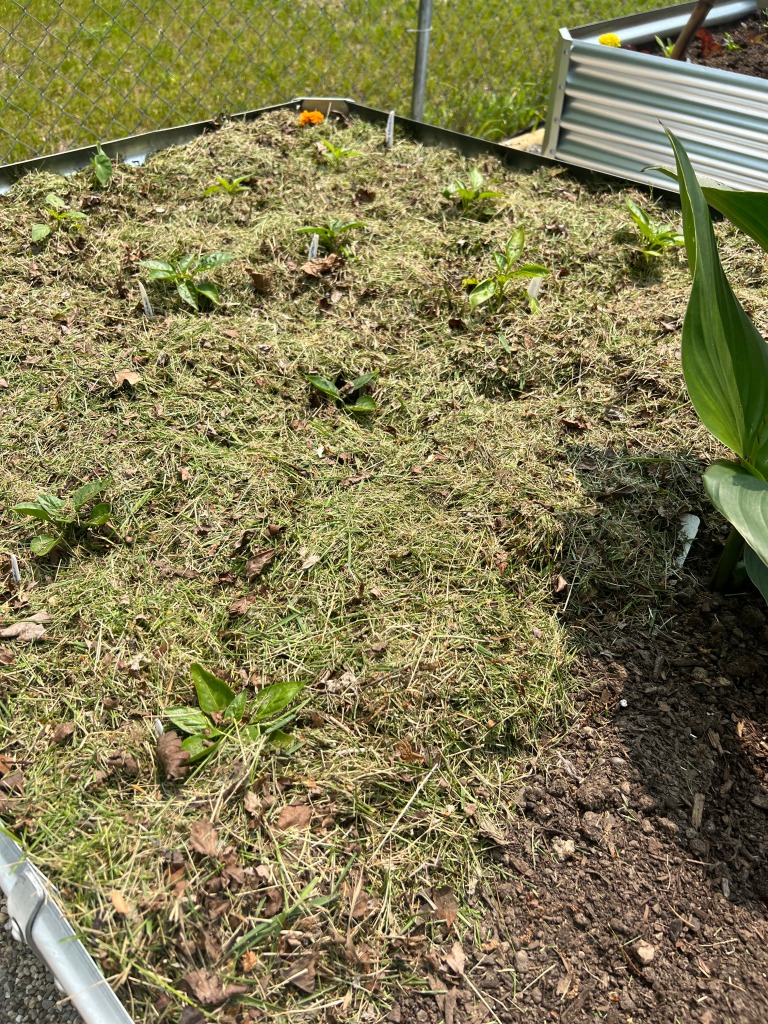
Organic gardening also prioritizes natural pest control methods. By attracting beneficial insects, such as ladybugs and lacewings, and using companion planting techniques, we can reduce the need for chemical pesticides. This not only protects the environment but also creates a balanced ecosystem where pests are naturally controlled.
When it comes to sustainable gardening, the choice of materials and tools is crucial. Opting for eco-friendly options can significantly reduce our impact on the environment and promote a more sustainable approach to gardening.
For example, instead of using plastic pots, consider using biodegradable alternatives made from materials like coconut coir or peat. These pots will eventually break down in the soil, reducing waste and minimizing pollution.

Similarly, choose hand tools made from sustainable materials, such as bamboo or recycled steel. Avoid tools with plastic handles or non-recyclable components. By making conscious choices about the materials we use, we can contribute to a more sustainable gardening industry.
Water scarcity is a pressing issue in many parts of the world. By implementing water conservation techniques in our gardens, we can make a significant difference in reducing water usage and preserving this valuable resource.
One effective method is mulching. By applying a layer of organic mulch, such as wood chips or straw, around plants, we can help retain moisture in the soil. Mulch also acts as a barrier, reducing evaporation and weed growth.

Another water-saving technique is drip irrigation. This method delivers water directly to the root zone of plants, minimizing wastage through evaporation and runoff. Drip irrigation systems can be easily installed and adjusted to meet the specific needs of different plants, ensuring efficient water usage.
Collecting rainwater is another effective way to conserve water in the garden. Install rain barrels or other water collection systems to capture and store rainwater for later use. This free and natural source of water can be used to irrigate plants during dry periods, reducing reliance on municipal water supplies.

Join hundreds of our subscribers and be the first to know about new content and special offers.
Composting is a fundamental practice in sustainable gardening. It involves the decomposition of organic materials, such as kitchen scraps and garden waste, to create nutrient-rich compost. By composting, we not only reduce the amount of waste that goes to landfills but also produce a valuable resource for our gardens.
Compost improves soil fertility, enhances water retention, and provides essential nutrients to plants. It also helps suppress diseases and pests, reducing the need for synthetic chemicals. By implementing composting practices in our gardens, we are closing the nutrient loop and creating a more sustainable and self-sufficient system.

To start composting, designate an area in your garden for a compost pile or use a compost bin. Add a mix of green materials (such as fruit and vegetable scraps) and brown materials (such as leaves and twigs) in the right proportions. Regularly turn the compost pile to promote decomposition and ensure proper aeration. With time, you will have rich, dark compost ready to nourish your plants.
Beneficial insects and pollinators play a vital role in sustainable gardening. They help control pests, enhance plant reproduction, and contribute to the overall health and diversity of our gardens. By creating a welcoming habitat for these beneficial creatures, we can reduce the need for chemical pesticides while promoting a thriving ecosystem.
To attract beneficial insects, incorporate a variety of flowering plants in your garden. Choose plants that provide nectar and pollen sources throughout the growing season. Native wildflowers, herbs, and perennial plants are particularly attractive to beneficial insects and pollinators.

Create habitats such as insect hotels, bee houses, or butterfly puddling areas to provide shelter, nesting sites, and food sources. Avoid using chemical pesticides, as they can harm beneficial insects. Instead, rely on natural pest control methods, such as companion planting and biological controls, to maintain a balance between pests and predators.
Native plants are an essential component of sustainable gardening. They are adapted to local climates, require fewer resources, and provide food and shelter for native wildlife. By incorporating native plants into our gardens, we can promote biodiversity and create a more resilient and sustainable ecosystem.
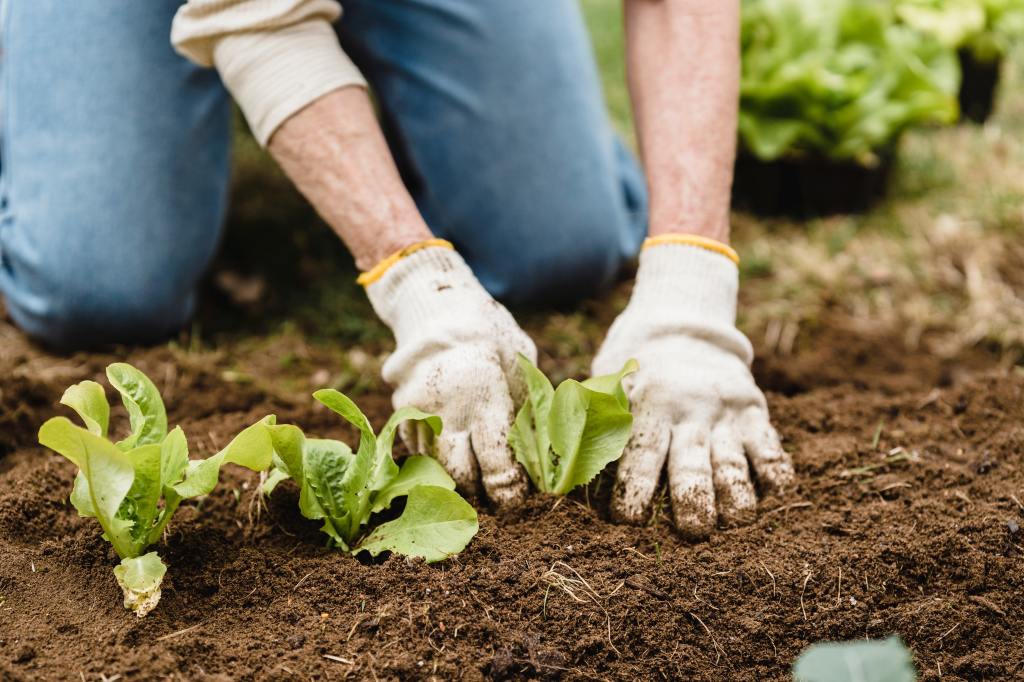
Native plants have evolved alongside local wildlife and provide the necessary resources for their survival. They attract a diverse range of insects, birds, and other animals, contributing to a healthy and balanced garden ecosystem. Additionally, native plants are often more resistant to pests and diseases, reducing the need for chemical interventions.
When selecting native plants, consider their specific requirements, such as sun exposure and soil type. Choose a mix of species that bloom at different times of the year to provide a continuous source of food for pollinators. By creating a garden with a variety of native plants, you will not only support biodiversity but also enjoy a beautiful and thriving landscape.
Designing a sustainable garden involves careful planning and consideration of environmental factors. By incorporating sustainable design principles, we can create a garden that is not only visually appealing but also ecologically sound.
Start by observing the natural features of your site, such as sunlight, soil type, and water drainage. Use this information to select plants that are well-suited to your garden’s conditions, reducing the need for excessive watering or soil amendments.

Consider creating different zones within your garden to cater to different plant requirements. Group plants with similar water needs together, allowing for more efficient irrigation. Integrate edible plants with ornamental ones to maximize the productivity of your garden.
Incorporate elements such as rain gardens or bioswales to manage stormwater runoff and promote water infiltration. These features can help reduce erosion, filter pollutants, and recharge groundwater.
Finally, aim for a low-maintenance garden design that minimizes the need for excessive pruning, mowing, and watering. By choosing plants with low water requirements and native species adapted to your region, you can create a garden that thrives with minimal intervention.
Maintaining an eco-friendly garden requires ongoing care and attention. Here are some tips to help you keep your garden sustainable and thriving:
By following these tips, you can maintain an eco-friendly garden that not only enhances the beauty of your surroundings but also contributes to a sustainable future.
In conclusion, sustainable gardening is a powerful tool for promoting environmental stewardship and creating a more eco-friendly world. By embracing sustainable gardening practices, such as organic gardening, water conservation, composting, and biodiversity conservation, we can cultivate our own little paradise while minimizing our impact on the planet.
Through careful plant selection, responsible use of resources, and conscious gardening techniques, we can create a garden that supports the health of the ecosystem, conserves water, and attracts beneficial insects and pollinators. By adopting sustainable gardening practices, we are not only benefiting ourselves but also contributing to a more sustainable and resilient future.
So, let’s embark on this journey of cultivating an eco-friendly paradise in our own gardens. Start small, make conscious choices, and watch as your garden becomes a haven for both nature and yourself. Together, we can make a difference and create a sustainable legacy for generations to come.
CTA: Join the sustainable gardening movement today! Start implementing these eco-friendly practices in your own garden and make a positive impact on the environment. Together, we can cultivate a greener and more sustainable future.
If you enjoyed this blog , please LIKE, Follow, Share & leave me a comment! I love your feedback!
If you aren’t following me on Facebook & Instagram, go on over & give a LIKE & Follow me for daily tips & tricks for your home & garden!
Remember to eat fresh, shop local, & have a happy day,
Jean
Copyright Policy
All text and images on this site are copyright of For Dragonflies And Me. Unless otherwise noted, you may not use this content
This post may contain affiliate links. If you choose to purchase through an affiliate link, I may receive a small commission at no additional cost to you. You can see my full disclaimer here.
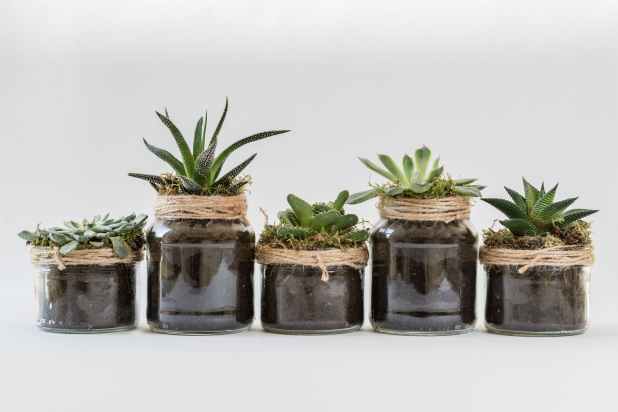

Houseplants have become increasingly popular over the years, and for good reason. Not only do they add beauty and style to our homes, but they also provide numerous benefits for our overall well-being. Studies have shown that having houseplants can improve air quality, reduce stress, boost creativity, and even increase productivity. If you’ve always admired the lush greenery in other people’s homes and dream of having your own indoor oasis, then it’s time to unleash your inner botanist and master the art of houseplant care.
Before diving into the world of houseplant care, it’s important to understand the many benefits they bring to our lives. Houseplants not only enhance the aesthetics of our homes, but they also have a positive impact on our physical and mental well-being.
One of the most well-known benefits of houseplants is their ability to improve air quality. They naturally purify the air by absorbing carbon dioxide and releasing oxygen through photosynthesis. Some houseplants, such as the Snake Plant and Peace Lily, are known for their air-purifying properties and can help remove harmful toxins like formaldehyde and benzene.

In addition to their air-purifying abilities, houseplants have also been proven to reduce stress and boost mood. Studies have shown that being in the presence of plants can lower blood pressure, reduce anxiety, and increase feelings of calmness and relaxation. The act of caring for plants has also been found to provide a sense of purpose and satisfaction, which can improve overall mental well-being.

Join hundreds of our subscribers and be the first to know about new content and special offers.
Now that we’ve established the benefits of having houseplants, it’s time to delve into the basics of houseplant care. Taking care of houseplants involves a combination of factors, including watering, lighting, temperature, and humidity. Understanding these basic principles will set you on the path to becoming a successful plant parent.
Watering is one of the most crucial aspects of houseplant care. Each plant has different water requirements, and it’s important to provide them with the right amount of moisture. Overwatering can lead to root rot, while under-watering can cause dehydration and wilting. The key is to strike a balance by checking the moisture level of the soil and adjusting your watering frequency accordingly.
Lighting is another important factor to consider when caring for houseplants. Different plants have varying light requirements, ranging from low to bright indirect light. Understanding the lighting needs of your plants will help you determine the best location for them in your home. It’s also important to rotate your plants periodically to ensure even growth and prevent them from leaning towards the light source.
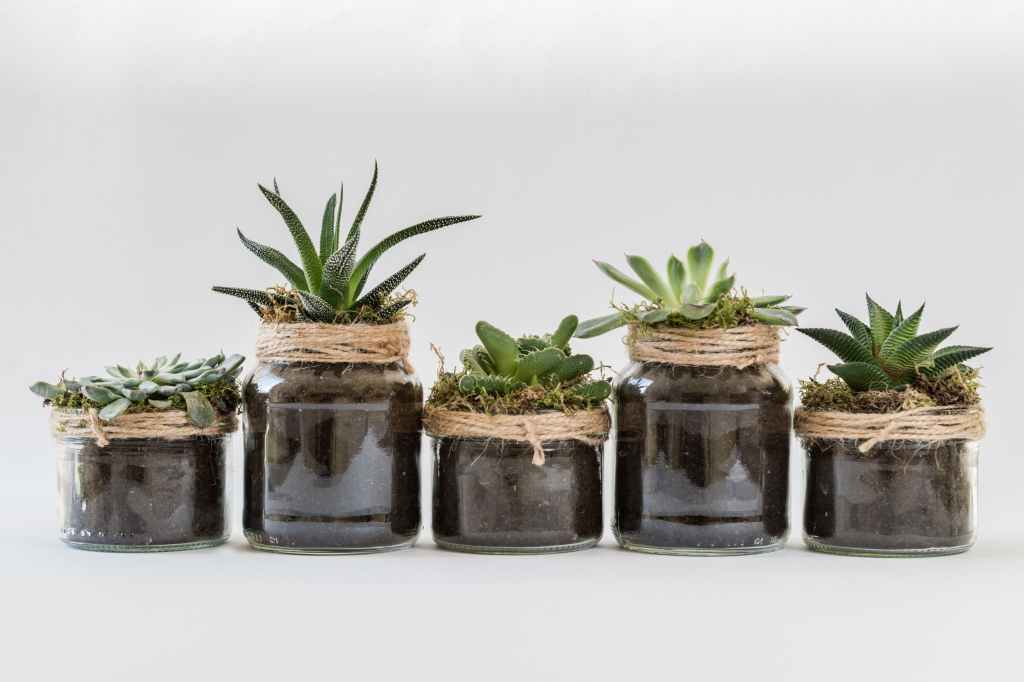
Temperature and humidity are also important factors to consider. Most houseplants thrive in temperatures between 60-75°F (15-24°C), but it’s important to research the specific needs of each plant. Some plants, like tropical varieties, thrive in higher humidity levels, while others prefer drier conditions. It’s important to provide the right environment for your plants to ensure their health and longevity.
Now that you have a good understanding of the basics of houseplant care, it’s time to choose the right plants for your home. There are countless varieties of houseplants to choose from, each with its own unique care requirements and aesthetic appeal. Here are a few factors to consider when selecting houseplants for your home:
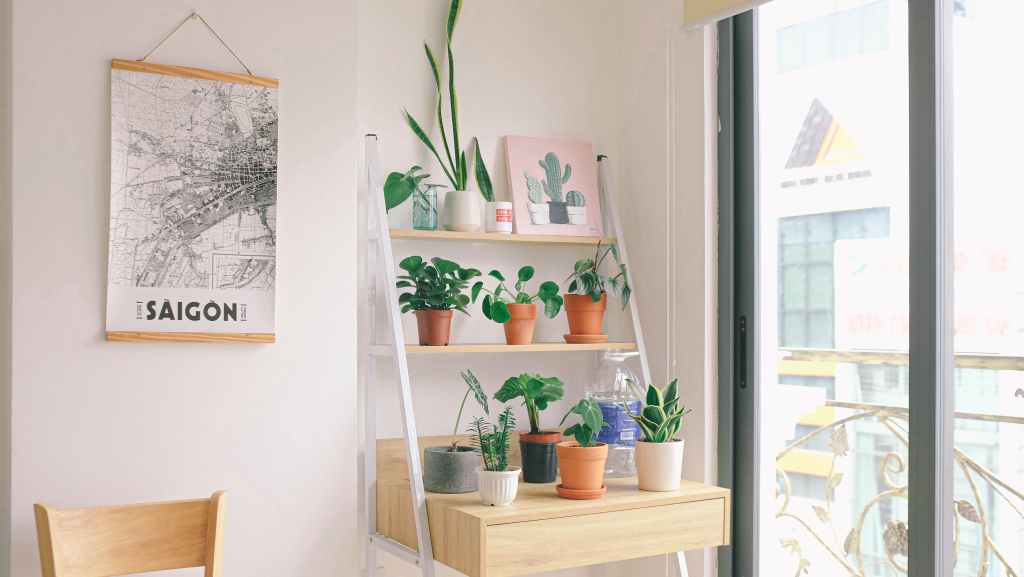
By considering these factors, you can narrow down your choices and select the perfect houseplants for your home.
To successfully care for your houseplants, it’s important to have the right tools and supplies on hand. Here are some essential items that every aspiring plant parent should have:

By having these essential tools and supplies, you’ll be well-equipped to provide the best care for your houseplants.
Proper watering and humidity are crucial for the health and well-being of your houseplants. However, different types of plants have varying water and humidity requirements. Here’s a breakdown of some common houseplants and their specific needs:
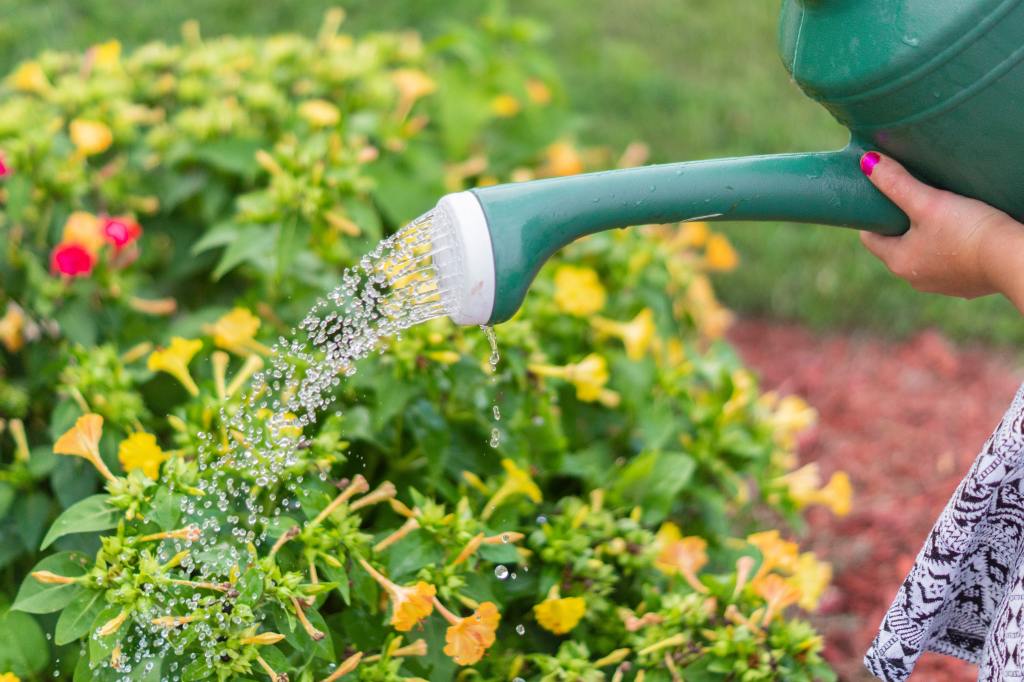
Remember to always research the specific watering and humidity requirements of each plant to ensure their optimal health.
In addition to water and humidity, proper lighting is essential for the growth and well-being of your houseplants. Different plants have different lighting requirements, and understanding these requirements will help you determine the best positioning for your plants.
By providing the right lighting conditions and positioning, you’ll set your houseplants up for success.
In addition to regular watering and lighting, houseplants also require occasional fertilizing and repotting to thrive. Fertilizing provides essential nutrients that may be lacking in the potting mix, while repotting allows plants to grow and expand their root systems. Here are some guidelines for fertilizing and repotting your houseplants:

When repotting, choose a pot that is slightly larger than the current one and use fresh potting mix. Gently loosen the root ball and place it in the new pot, filling in the gaps with additional soil. Water thoroughly after repotting to help settle the plant in its new home.
Even with the best care, houseplants can encounter a few common problems. Here are some troubleshooting tips for addressing these issues:
By promptly addressing these issues, you can ensure the health and vitality of your houseplants.
To ensure consistent care for your houseplants, it’s helpful to create a houseplant care routine. A routine will help you stay organized and ensure that your plants receive the care they need. Here are some steps to follow when establishing a houseplant care routine:
By following a consistent care routine, you’ll be able to provide the best care for your houseplants and ensure their long-term health.
Once you’ve mastered the basics of houseplant care, you can explore advanced techniques to take your plant parenting skills to the next level. Here are a few advanced care techniques to consider:
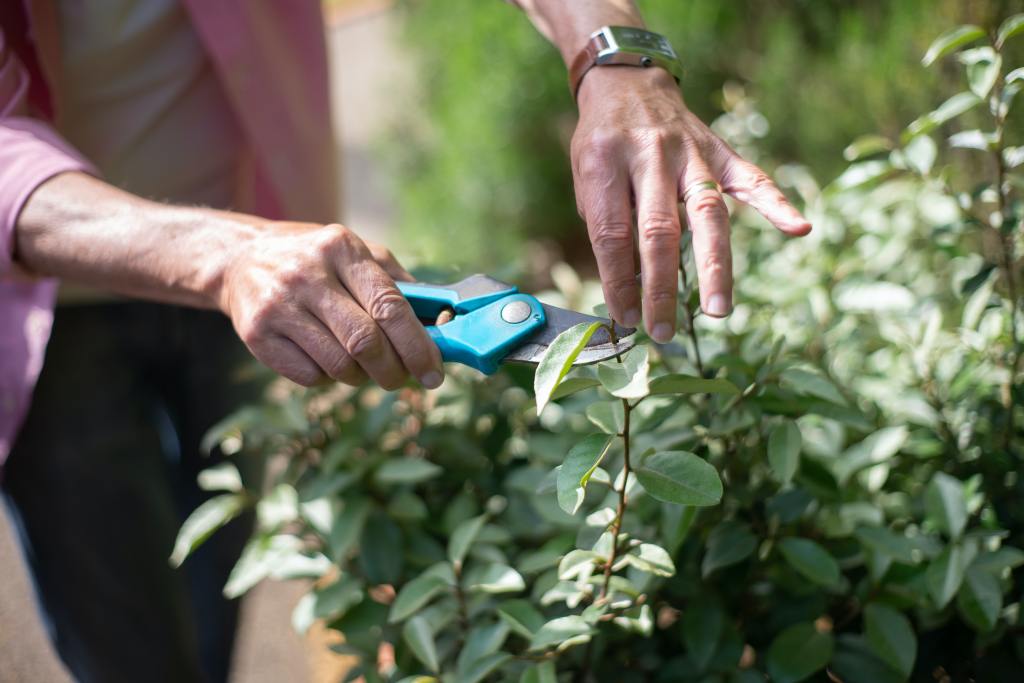
Remember to approach advanced techniques with caution and always research and understand the specific needs of each plant before attempting any new methods.
Congratulations! You’ve embarked on a journey to unleash your inner botanist and master the art of houseplant care. By understanding the benefits of having houseplants, learning the basics of care, choosing the right plants, and providing them with the proper tools, you’re well on your way to creating a thriving indoor oasis. Remember to be patient, observe your plants closely, and adjust your care routine as needed. With time and dedication, you’ll develop a green thumb and enjoy the many rewards that come with being a successful plant parent.
Ready to start your own indoor garden? Explore our wide selection of houseplants and join the growing community of plant lovers. Whether you’re a beginner or an experienced gardener, we have the perfect plants to suit your style and space. Start your journey to becoming a master of houseplant care today!
If you enjoyed this blog , please LIKE, Follow, Share & leave me a comment! I love your feedback!
If you aren’t following me on Facebook & Instagram, go on over & give a LIKE & Follow me for daily tips & tricks for your home & garden!
Remember to eat fresh, shop local, & have a happy day,
Jean
Copyright Policy
All text and images on this site are copyright of For Dragonflies And Me. Unless otherwise noted, you may not use this content
This post may contain affiliate links. If you choose to purchase through an affiliate link, I may receive a small commission at no additional cost to you. You can see my full disclaimer here.

I want to say thank you to all of my followers! You’ve made this year wonderful, and without all of you, I could not continue to grow
I hope you all have a wonderful holiday season with your friends, family and loved ones.
May 2024 be filled with love, joy, and peace for each of you.
As I always say, be sure to eat fresh, shop local, and have a happy day.
Sincerely,
Jean






New Year’s Eve is a time to bid farewell to the old year and welcome the new one with open arms. And what better way to celebrate than by throwing an epic New Year’s Eve bash? Hosting a memorable party requires careful planning and attention to detail. In this article, I will share my top tips for hosting a New Year’s Eve party that your guests will be talking about for years to come.
The first step in throwing an epic New Year’s Eve bash is to set the theme and tone for the party. Whether you want a glamorous black-tie affair or a casual night of fun, the theme will set the stage for the rest of your planning. Choose a theme that reflects your personality and the atmosphere you want to create.

Once you have chosen a theme, it’s time to start thinking about the decorations. From glittering balloons to shimmering tablecloths, the right decorations can transform your space into a festive wonderland. Consider incorporating the theme into every aspect of your party, from the invitations to the food and drinks.
Now that you have set the theme and tone for your party, it’s time to create the guest list and send out invitations. Start by making a list of family, friends, and colleagues you would like to invite. Consider the size of your space and your budget when finalizing the guest list.

Once you have finalized the guest list, it’s time to send out invitations. In this digital age, there are many options for sending invitations, from traditional paper invites to electronic ones. Choose a method that suits your style and budget. Make sure to include all the necessary details, such as the date, time, location, and any special instructions or requests.

Subscribe to our newsletter to get the latest stories in your inbox.
No New Year’s Eve party is complete without delicious food. When planning your party menu, consider your guests’ dietary restrictions and preferences. Offer a variety of options, including vegetarian, gluten-free, and dairy-free dishes. It’s also a good idea to include some crowd-pleasing favorites like finger foods, sliders, and mini desserts.
To make your party menu even more memorable, consider adding a few festive touches. Serve a signature cocktail that reflects the theme of your party, or create a themed dessert bar with an assortment of sweet treats. Don’t forget to provide plenty of non-alcoholic beverages for those who choose not to drink.
In addition to delicious food, a well-stocked bar is essential for any New Year’s Eve bash. When selecting drinks for your party, consider offering a variety of options to cater to different tastes. Stock up on a selection of wines, beers, and spirits, as well as mixers and garnishes. Don’t forget to include non-alcoholic options like mocktails and sparkling water.
Be sure to check out my Cheers to the Holidays: Unleash Your Inner Mixologist with These Yummy Drinks~ Non-alcoholic versions included!

Setting up a bar that is both functional and visually appealing is crucial. Make sure to have enough glassware, ice, and bar tools for your guests. Consider adding some decorative touches, such as a personalized cocktail menu or a festive backdrop. And don’t forget to designate a responsible person to serve and monitor alcohol consumption throughout the night.
Creating a festive ambiance is key to hosting an epic New Year’s Eve bash. Start by decorating your space with party essentials like streamers, balloons, and confetti. Add some sparkle with fairy lights and candles. Consider incorporating the theme of your party into the decorations, whether it’s a specific color scheme or a more elaborate theme like “Great Gatsby” or “Roaring 20s.”
In addition to decorations, lighting plays a crucial role in setting the mood. Opt for warm, soft lighting to create a cozy and intimate atmosphere. Consider using dimmer switches or string lights to achieve the desired effect. And don’t forget to create designated areas for dancing, mingling, and relaxing.
No party is complete without a killer playlist. A well-curated selection of music can transform the energy of your party and keep your guests entertained throughout the night. When creating your playlist, consider the age range and musical preferences of your guests. Mix up the genres and tempos to cater to different tastes and keep the energy flowing.

To make your playlist even more memorable, consider adding some classic New Year’s Eve songs and crowd favorites. Songs like “Auld Lang Syne” and “Celebration” are sure to get everyone in the mood for a countdown to midnight. And don’t forget to include some dance floor anthems to keep the party going into the early hours.
While music is a great way to keep the party going, incorporating fun party games and activities can take your New Year’s Eve bash to the next level. Plan some interactive games that will get your guests mingling and laughing together. From charades to trivia games, there are countless options to choose from.

If you have a larger space or an outdoor area, consider setting up different activity stations. You could have a photo booth with props for capturing memorable moments, a DIY cocktail bar where guests can create their own signature drinks, or even a mini casino with card games and roulette.
The highlight of any New Year’s Eve party is, of course, the countdown to midnight. This is the moment when everyone comes together to celebrate the arrival of the new year. To create a memorable moment, consider incorporating some special touches.

One idea is to provide party favors for your guests to use during the countdown. From sparklers to confetti poppers, these small gifts can add an extra element of excitement and fun. You could also plan a synchronized toast, where everyone raises their glasses and toasts to the new year at the stroke of midnight.
While it’s important to have fun and let loose on New Year’s Eve, it’s equally important to prioritize safety. As the host, it’s your responsibility to ensure the well-being of your guests. Here are some safety tips to keep in mind:
Once the clock strikes midnight and the celebrations come to an end, it’s time to tackle the after-party cleanup. Enlist the help of a few close friends or family members to make the process more efficient. Start by clearing away empty glasses and dishes. Dispose of any leftover food and drinks. Put away decorations and clean up any spills or messes.
After the cleanup is done, take the time to send out thank you notes to your guests. Express your gratitude for their presence and thank them for making your New Year’s Eve bash a memorable one. A handwritten note or a personalized email will show your appreciation and leave a lasting impression.
In conclusion, hosting an epic New Year’s Eve bash requires careful planning and attention to detail. From setting the theme and tone to creating a killer playlist and planning fun party games, every aspect of your party contributes to the overall experience. Remember to prioritize safety and be a responsible host.
By following these top tips, you will be well on your way to throwing a New Year’s Eve party that your guests will remember for years to come. So, go ahead, start planning, and here’s to a fabulous New Year’s Eve bash! Cheers!
CTA: Start planning your epic New Year’s Eve bash today and make it a night to remember!
If you enjoyed this blog , please LIKE, Follow, Share & leave me a comment! I love your feedback!
If you aren’t following me on Facebook & Instagram, go on over & give a LIKE & Follow me for daily tips & tricks for your home & garden!
Remember to eat fresh, shop local, & have a happy day,
Jean
Copyright Policy
All text and images on this site are copyright of For Dragonflies And Me. Unless otherwise noted, you may not use this content
This post may contain affiliate links. If you choose to purchase through an affiliate link, I may receive a small commission at no additional cost to you. You can see my full disclaimer here.


Mixology is an art form that involves the creation and mastery of cocktails. As a mixologist, having the right tools is essential for crafting exceptional drinks. Whether you’re a professional bartender or a home enthusiast, having a well-stocked bar with essential tools can elevate your cocktail game to new heights. In this guide, we will explore the must-have tools for every mixologist, from glassware to specialized equipment. So, let’s dive in and discover the tools that will help you become a master of mixology.
Be sure to check out my blog, Cheers to the Holidays: Unleash Your Inner Mixologist with These Yummy Drinks~ with non-alcoholic variations!
To begin your mixology journey, there are a few essential tools that every aspiring mixologist should have in their arsenal. These tools will not only make your cocktail-making process more efficient but also ensure that your drinks are of the highest quality.

1. Boston Shaker: The Boston shaker is a classic tool used by mixologists worldwide. It consists of two parts – a metal tin and a mixing glass. The tin is placed on top of the glass, creating a tight seal. This shaker is perfect for making large batches of cocktails and allows for a controlled, vigorous shake.
2. Hawthorne Strainer: After shaking or stirring your cocktail, you’ll need a strainer to separate the liquid from the ice and any muddled ingredients. The Hawthorne strainer is a versatile tool that fits snugly into the top of your shaker or mixing glass, ensuring a smooth pour without any unwanted bits.
3. Mixing Glass: A mixing glass is an essential tool for stirred cocktails. It provides a spacious environment for gently combining spirits and other ingredients without dilution. Look for a mixing glass with a thick base and a comfortable grip to ensure stability while stirring.
Glassware plays a significant role in the presentation and enjoyment of cocktails. Each type of glass is designed to enhance the flavors and aromas of specific cocktails. Here are the essential glassware options every mixologist should have in their collection:
1. Coupe Glass: The coupe glass is a classic choice for serving champagne and cocktails. Its wide, shallow bowl showcases the colors and textures of your cocktail while allowing the aromas to develop.
2. Highball Glass: The highball glass is tall and slender, perfect for refreshing, tall drinks like the Mojito or the Gin and Tonic. Its shape maintains the carbonation and keeps the drink cool for longer.
3. Martini Glass: The iconic martini glass is a must-have for serving elegant and sophisticated cocktails. Its unique shape, with a long stem and a wide, triangular bowl, enhances the visual appeal and aroma of the drink.
Shakers and strainers are vital tools for achieving a well-mixed and balanced cocktail. Here are the key shakers and strainers you should consider adding to your mixology toolkit:
1. Cobbler Shaker: The cobbler shaker is a three-piece shaker that consists of a metal tin, a built-in strainer, and a cap. It’s easy to use and perfect for beginners, as it eliminates the need for an additional strainer. The built-in strainer allows for a controlled pour while keeping ice and any muddled ingredients inside the shaker.
2. Fine Mesh Strainer: For those who prefer a smoother and clearer cocktail, a fine mesh strainer is a must-have. It effectively removes any small ice shards or fruit pulp, ensuring a velvety texture and a pure flavor.
3. Julep Strainer: The julep strainer is a classic tool used for straining stirred cocktails. Its perforated spoon-like design allows for a slow and controlled pour, capturing any ice shards and large ingredients.
Accurate measurements are crucial in mixology, as they ensure consistency and balance in your cocktails. Here are the essential jiggers and measuring tools you should have in your bar:
1. Japanese Jigger: The Japanese jigger is a double-sided measuring tool that usually comes in a 1 oz and 2 oz capacity. Its slender design allows for precise measurements and easy pouring.
2. Measuring Spoons: Measuring spoons are essential for adding small quantities of ingredients, such as bitters or syrups, to your cocktails. Look for stainless steel spoons with clear and accurate measurements.

3. Liquid Measuring Cup: A liquid measuring cup is a versatile tool that allows you to measure larger quantities of liquids accurately. Look for a cup with clear markings and a spout for easy pouring.

Muddlers and bar spoons are essential tools for creating muddled cocktails and stirring mixed drinks. Here’s what you need to know about these tools:
1. Wooden Muddler: A wooden muddler is perfect for gently mashing fruits, herbs, and spices to release their flavors. Look for a muddler with a comfortable grip and a flat bottom for effective muddling.
2. Bar Spoon: The bar spoon is a versatile tool that is used for stirring cocktails in a mixing glass or shaker. It typically has a long handle and a twisted stem, allowing for precise stirring and layering.
3. Teardrop Bar Spoon: The teardrop bar spoon is a variation of the classic bar spoon. Its teardrop-shaped end is perfect for layering cocktails by gently pouring ingredients over the back of the spoon.
Fresh citrus is a key ingredient in many cocktails, and having the right tools to extract its juices and zest is essential. Here are the tools you should consider adding to your mixology arsenal:
1. Citrus Juicer: A citrus juicer is a handy tool for extracting the juice from lemons, limes, and oranges. Look for a juicer with a sturdy construction and a reamer that effectively squeezes out every drop of juice.
2. Microplane Zester: A microplane zester is perfect for adding a burst of citrus flavor to your cocktails. It effortlessly grates the zest of citrus fruits, adding bright and aromatic notes to your drinks.
3. Channel Knife: A channel knife is a specialized tool used for creating long, decorative citrus peels. It allows you to easily cut thin strips of zest to garnish your cocktails and add a touch of elegance.
Ice is a crucial element in cocktails, and having the right tools to create and handle ice can make a significant difference in the final result. Additionally, garnishes add visual appeal and aromatic notes to your drinks. Here are the essential ice tools and garnish accessories for every mixologist:
1. Ice Cube Tray: A good-quality ice cube tray is a must-have for any mixologist. Look for trays that produce large, slow-melting ice cubes, as they will keep your cocktails chilled without dilution.
2. Lewis Bag and Mallet: If you enjoy making crushed ice cocktails like the Mint Julep or the Daiquiri, a Lewis bag and mallet are essential. The Lewis bag is a heavy-duty canvas bag that allows you to crush ice with ease, while the mallet provides the necessary force.

3. Cocktail Picks: Cocktail picks are versatile tools that can be used for skewering garnishes, such as olives, cherries, or citrus twists. They add a touch of elegance to your cocktails and make it easier for guests to enjoy their garnishes.
For those who are passionate about mixology and want to delve into more advanced techniques, there are specialized tools that can elevate your craft. Here are a few examples:
1. Smoking Gun: A smoking gun is a tool used to infuse cocktails with smoky flavors. It works by burning wood chips or herbs and capturing the smoke in a glass or shaker.
2. Molecular Gastronomy Kit: Molecular gastronomy kits contain a variety of tools and ingredients that allow you to experiment with unique textures, flavors, and presentations. From foams to caviar-like spheres, these kits offer endless possibilities for creative mixology.
3. Bar Spoon with Disk: A bar spoon with a disk is a specialized tool used for layering cocktails. The disk rests on top of the liquid, ensuring a slow and controlled pour. It’s perfect for creating visually stunning layered drinks.
Now that you’re familiar with the essential tools for every mixologist, you might be wondering where to purchase them. Here are a few options to consider:
1. Specialty Barware Stores: Look for specialty barware stores in your area that cater to professional bartenders and mixologists. They often carry a wide range of high-quality tools and glassware.
2. Online Retailers: There are numerous online retailers that specialize in barware and mixology tools. Websites like Amazon, Cocktail Kingdom, and BarProducts.com offer a vast selection of tools and accessories for mixologists of all levels.
3. Local Restaurant Supply Stores: Check your local restaurant supply stores for mixology tools. They often carry a variety of glassware, shakers, and other essential tools at competitive prices.
Becoming a skilled mixologist requires passion, practice, and the right tools. By investing in essential tools for every mixologist, you can elevate your cocktail-making skills and create drinks that are both visually stunning and delicious. From shakers and strainers to glassware and garnish accessories, each tool plays a crucial role in the mixology process. So, stock up your bar, experiment with different techniques, and let your creativity shine. Cheers to your mixology journey!
CTA: Explore our wide range of mixology tools and elevate your cocktail game today!
If you enjoyed this blog , please LIKE, Follow, Share & leave me a comment! I love your feedback!
If you aren’t following me on Facebook & Instagram, go on over & give a LIKE & Follow me for daily tips & tricks for your home & garden!
Remember to eat fresh, shop local, & have a happy day,
Jean
Copyright Policy
All text and images on this site are copyright of For Dragonflies And Me. Unless otherwise noted, you may not use this content
This post may contain affiliate links. If you choose to purchase through an affiliate link, I may receive a small commission at no additional cost to you. You can see my full disclaimer here.


The holiday season is upon us, and with it comes the joy of giving and receiving gifts. While we may have our main presents sorted, stocking stuffers add an extra touch of magic to Christmas morning.
These small yet thoughtful gifts tucked away in our stockings can bring a smile to anyone’s face. I line my stair railings with all of my children and grandchildren stockings.

If you find yourself running out of time and ideas, fear not! In todays article, I’ll explore a variety of last-minute stocking stuffers that are sure to delight the whole family.
Last-minute stocking stuffers offer numerous benefits, especially during the hectic holiday season. Firstly, they provide an opportunity to add an element of surprise and fun to the gift-giving experience. Whether it’s a small toy, a unique gadget, or a personalized trinket, stocking stuffers can make the recipient feel loved and appreciated.

This year I purchased personalized keychains for each of my children. I also ordered a personalized bracelet for my husband. I actually got these off of sites on Facebook!

Secondly, last-minute stocking stuffers are a great way to cater to individual preferences and interests. By choosing small items that align with each family member’s hobbies or passions, you can show that you’ve put thought into their gifts. From sports enthusiasts to book lovers, there’s a stocking stuffer out there for everyone.

Lastly, stocking stuffers offer a chance to enhance the overall holiday ambiance. As the family gathers around the Christmas tree, the anticipation of discovering what lies within the stockings can create a sense of excitement and joy. These small, unexpected surprises can make the holiday season truly memorable.
When it comes to stocking stuffers for kids, the options are endless. Consider adding small toys, such as puzzles, building blocks, or mini figurines, to keep their little hands busy. Art supplies, such as colored pencils, markers, or sketchbooks, can also ignite their creativity.

For tech-savvy kids, there are plenty of affordable gadgets available, such as mini Bluetooth speakers or portable game consoles. Alternatively, consider adding a gift card to their favorite online store, allowing them to choose their own digital content.

Books are another timeless stocking stuffer for children. Opt for age-appropriate titles that can transport them to new worlds or teach them valuable life lessons. Additionally, small plush toys or stuffed animals can provide comfort and companionship.

Teenagers can be challenging to shop for, but stocking stuffers offer an opportunity to surprise and delight even the most discerning young adults. Consider adding beauty or grooming products, such as face masks, skincare sets, or trendy nail polish colors. These items can help them express their personal style and boost their confidence.

For the music lovers, portable speakers or wireless headphones are a great choice. Alternatively, gift cards to streaming platforms or online music stores can allow them to discover new artists or download their favorite tunes.

If your teen is into fashion, consider adding trendy accessories like hats, scarves, or statement jewelry. These small yet stylish items can help them elevate their outfits and showcase their unique personality.
When it comes to stocking stuffers for adults, think about their hobbies and interests. For the coffee lover, a unique mug or a gourmet coffee sampler can provide a daily dose of joy. Similarly, for tea enthusiasts, consider adding a variety of exotic tea blends or a stylish teapot.

For the fitness enthusiasts, small fitness accessories like resistance bands, workout gloves, or a compact yoga mat can help them stay active and motivated. Alternatively, consider adding a subscription to a fitness app or a fitness-themed book for inspiration.

If your loved one enjoys cooking, gourmet spices, a high-quality kitchen gadget, or a cookbook from their favorite chef can make their culinary adventures even more enjoyable. Personalized keychains, engraved pens, or elegant stationery are also thoughtful options for professionals or those who appreciate the finer things in life.
For seniors, stocking stuffers can bring comfort and joy during the holiday season. Consider adding cozy items like warm socks, soft blankets, or a plush robe. These gifts can provide a sense of warmth and relaxation.
For those who enjoy gardening, small potted plants, gardening tools, or flower seeds can bring the beauty of nature indoors. Puzzle books, crossword puzzles, or Sudoku sets can also provide entertainment and mental stimulation.

Additionally, consider adding practical items like magnifying glasses, pill organizers, or easy-to-use kitchen gadgets that can make their daily routines more manageable. Lastly, personalized photo frames or albums can evoke cherished memories and remind them of the love and support they have from their family.
If you’re feeling crafty and want to add a personal touch to your stocking stuffers, consider DIY options. Homemade candles, bath bombs, or soaps are not only thoughtful gifts but also a chance to relax and unwind during the holiday season.

Hand-knitted scarves, hats, slippers or gloves can bring warmth and comfort to your loved ones. Alternatively, create personalized photo albums or scrapbooks filled with memories and heartfelt messages.

For food enthusiasts, consider making homemade jams, flavored oils, or cookies. These delicious treats are sure to be appreciated and enjoyed.
If you’re on a tight budget, there are plenty of affordable stocking stuffer options available. Consider small accessories like keychains, bookmarks, journals or decorative magnets. These items can add a touch of personality to everyday objects.

Playing cards, small board games, or puzzles are also budget-friendly options that can provide hours of entertainment for the whole family. Additionally, consider adding a pack of their favorite snacks or a selection of gourmet chocolates to satisfy their taste buds.
Don’t forget about our furry friends during the holiday season! For pet lovers, consider adding small treats, toys, or grooming products for their beloved companions.

Personalized pet tags or engraved pet mugs can also make thoughtful stocking stuffers.
As the holiday season approaches, don’t let the pressure of finding the perfect stocking stuffers overwhelm you. Embrace the opportunity to get creative and surprise your loved ones with thoughtful and unforgettable gifts. Whether it’s a small toy for a child, a trendy accessory for a teenager, or a practical item for a senior, stocking stuffers have the power to make the holiday season even more magical. So, start brainstorming, get shopping, and make your stockings extra special this year!
CTA: Discover a wide range of unique stocking stuffers for the whole family at [website name]. Make this holiday season unforgettable with our carefully curated selection of gifts.
If you enjoyed this blog , please LIKE, Follow, Share & leave me a comment! I love your feedback!
If you aren’t following me on Facebook & Instagram, go on over & give a LIKE & Follow me for daily tips & tricks for your home & garden!
Remember to eat fresh, shop local, & have a happy day,
Jean
Copyright Policy
All text and images on this site are copyright of For Dragonflies And Me. Unless otherwise noted, you may not use this content
This post may contain affiliate links. If you choose to purchase through an affiliate link, I may receive a small commission at no additional cost to you. You can see my full disclaimer here.
Everything Organic
Tina Marshall
A blog about my spiritual journey in the Lord Jesus Christ.
Livegood
"If we want to explore deeper oceans, we first have to leave sight of the shore.”
Grow your own veg
Online marketing, tools, services and informations
The Musings of a Writer / Freelance Editor in Training
Past to Future in a Picosecond
Hi, I'm Avisha Rasminda Twenty-Two years old, Introduce Myself As A Author , Painter , A Poet.